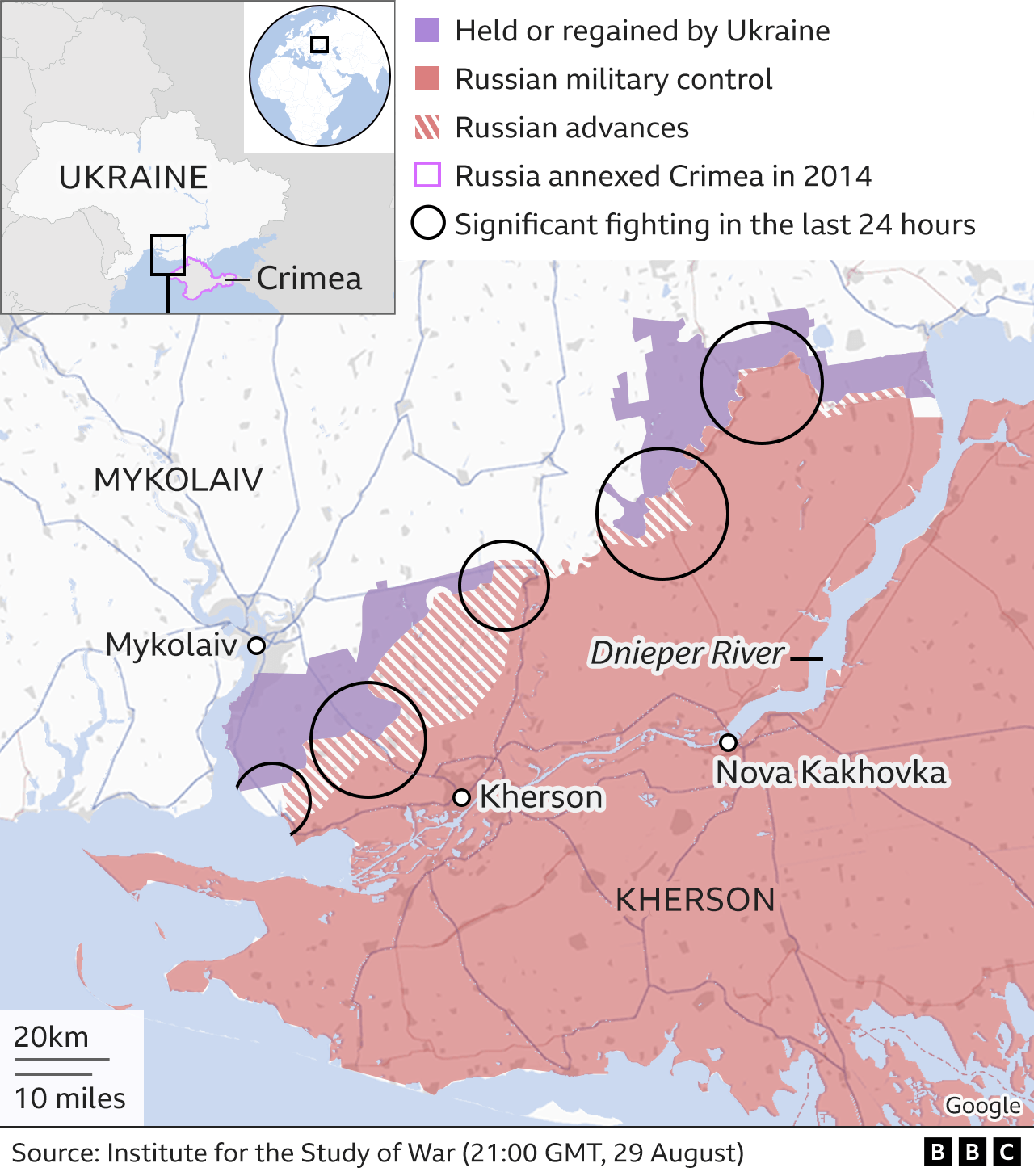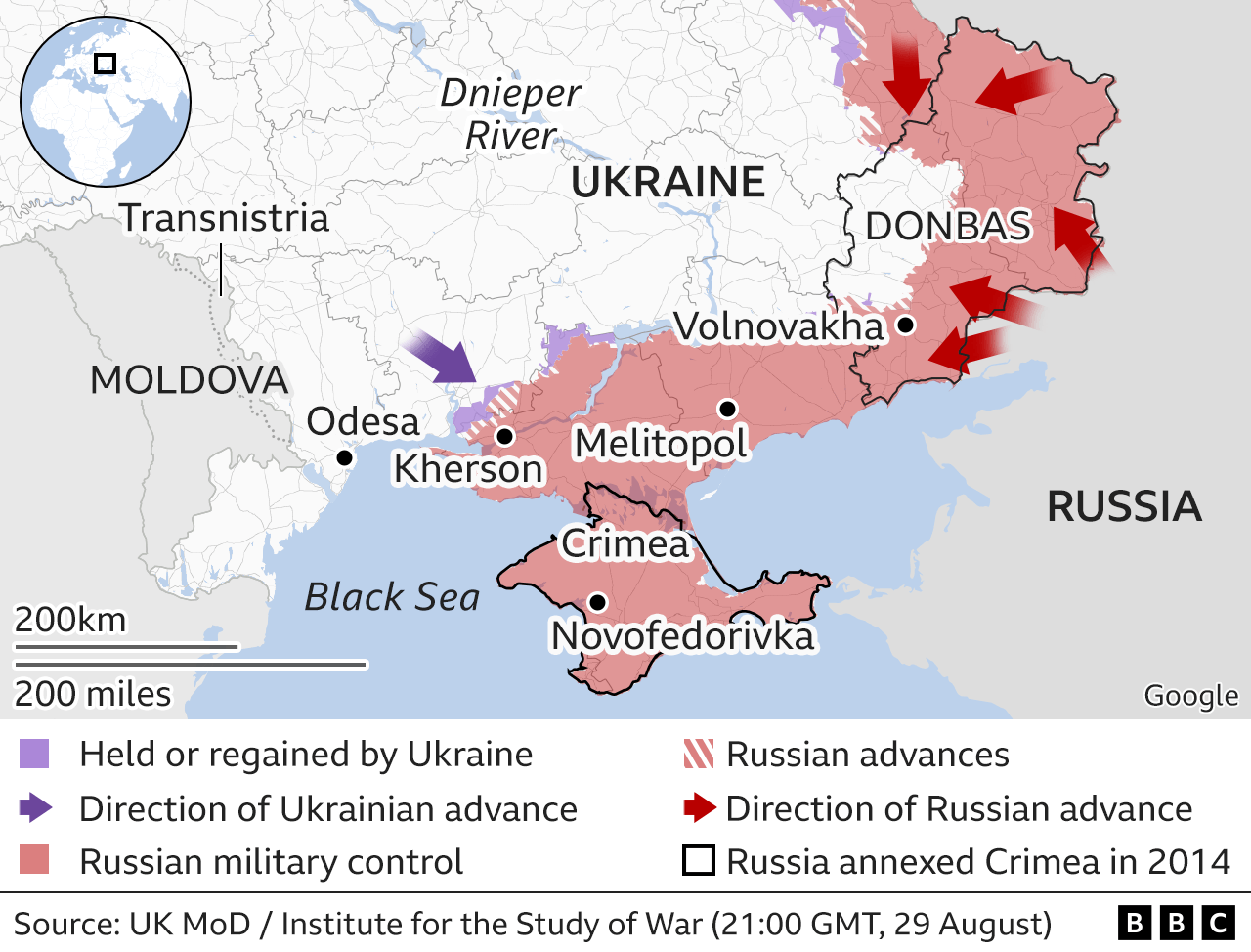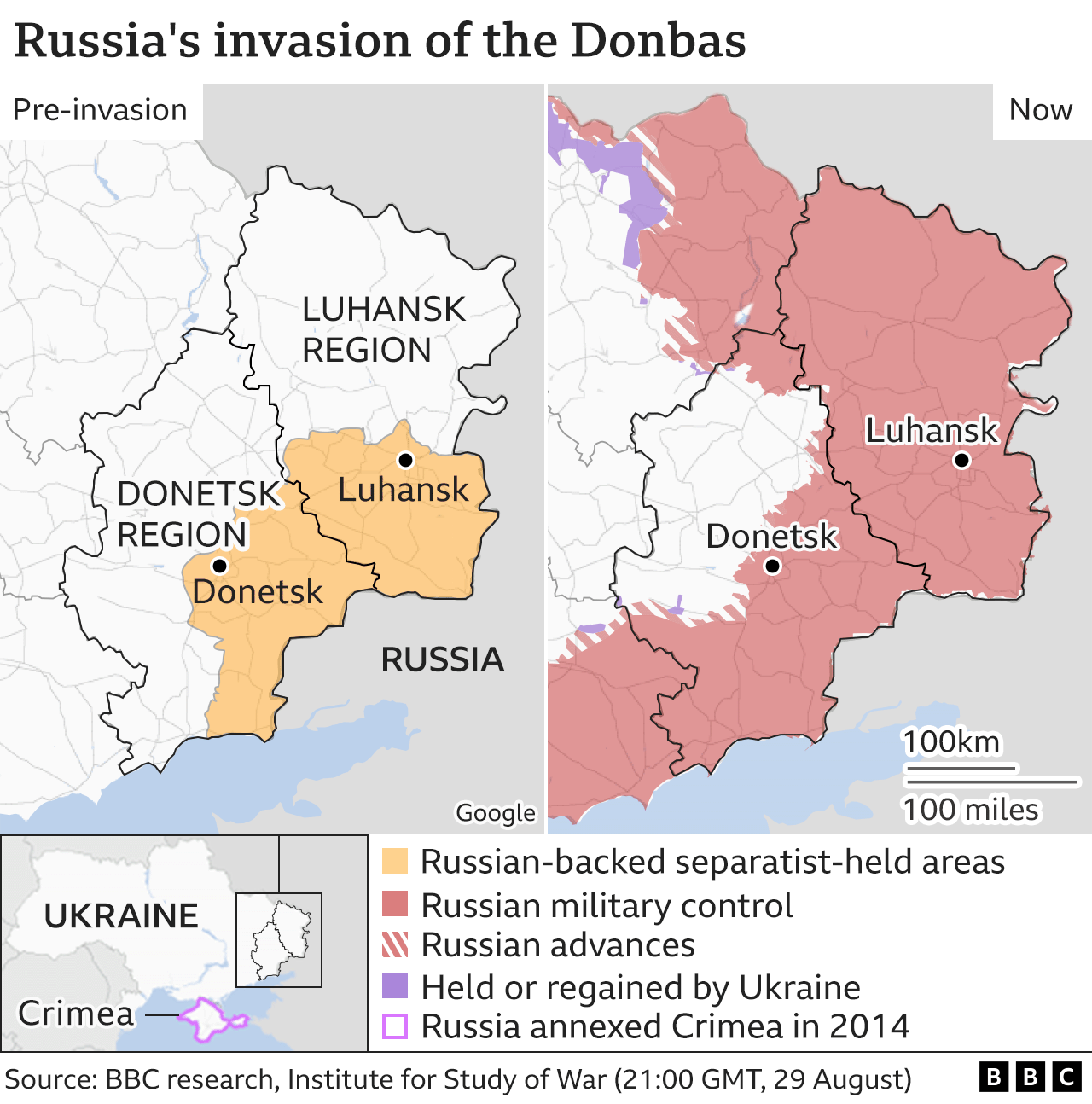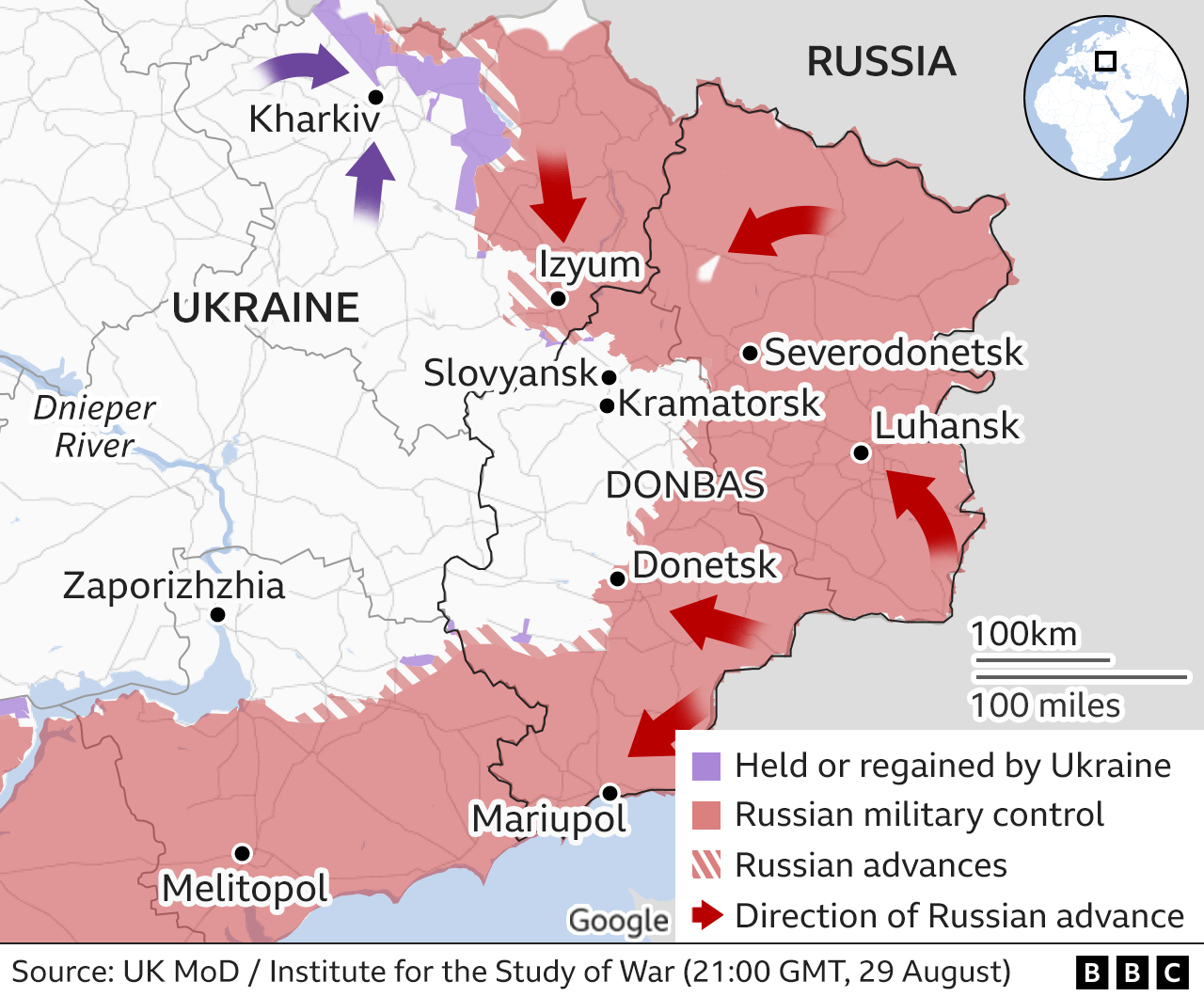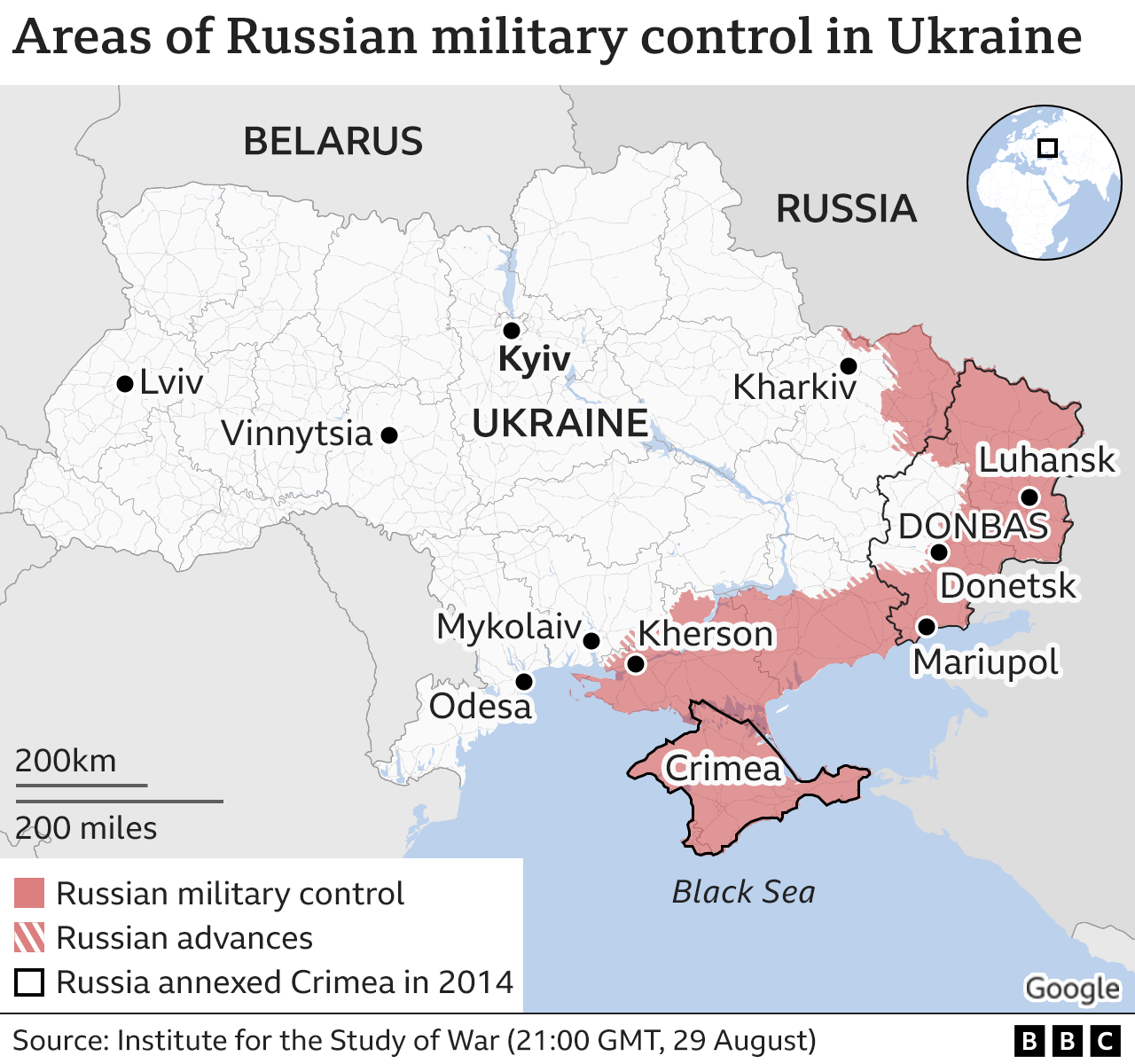BBC News 30 August 2022 - by the Visual Journalism Team
Ukraine is trying to push back Russian forces in the south whilst Russian troops continue to advance in the east.
Here are the latest developments:
- Ukraine's military says it has broken through Russia's first line of defence in the occupied Kherson region
- Russian forces are continuing efforts to make advances in the Donetsk region
- A UN inspection team should reach the embattled Zaporizhzhia nuclear power plant later this week
Clashes in the south
Ukrainian forces say they have broken through Russia's first line of defence in parts of the occupied region around the southern city of Kherson.
But Moscow, which has controlled the area since March, says Ukrainian troops suffered heavy losses and that the operation has been a failure.
The claims by both Ukraine and Russia have not been independently verified but they follow weeks of Ukrainian attacks aimed at cutting off Russian forces in the region.
On Tuesday, senior US officials said there had been an "uptick of fighting" in the area but could not confirm whether a counter-offensive had started.
And the Institute for the Study of War (ISW) said there had been significant fighting at five locations in the past 24 hours.
Ukraine said it had "destroyed warehouses, weapon accumulations and enemy control points with high precision strikes" and damaged bridges across the Dnieper River making it "possible to cut off the Russian army from the supply of weapons and personnel from Crimea".
Russian state news agency Tass reported Russia was using air defence systems in an attempt to fend off Ukrainian attacks in the area.
An inspection team from the UN nuclear watchdog should reach Ukraine's embattled Zaporizhzhia nuclear power plant later this week, the organisation's head has said.
Russian and Ukrainian sources have accused each other of shelling close to the plant, which is Europe's biggest nuclear facility.
Russia's military took over the plant in early March, but it is still being operated by Ukrainian staff.
The International Atomic Energy Agency's visit - part of a deal approved by Russian President Vladimir Putin on 19 August - will mark an important moment in being able to verify what is happening on the ground.
Meanwhile, one of the small number of vessels allowed to leave the southern port of Odesa carrying grain has docked in Djibouti in East Africa.
The MV Brave Commander, which left Ukraine after an agreement was reached with Russia, is carrying 23,000 tonnes of Ukrainian wheat that is bound for neighbouring Ethiopia.
Russia edging forward in east
Russian officials have said their forces are fighting for the "complete liberation" of the Donbas, which broadly refers to Ukraine's eastern regions of Donetsk and Luhansk, where Russian-backed separatists held significant territory before the invasion.
Russian forces now control all of the Luhansk region and they are continuing efforts to make advances in the Donetsk region.
Russian forces have conducted limited ground assaults north of Slovyansk, south-east of Siversk, south of Bakhmut, and in western Donetsk Oblast, according to the ISW.
Ukrainian officials reported that Russian forces withdrew after attempting offensive operations toward Bohorodychne and Dolyna, 24km and 22km north-west of Slovyansk.
Western weapons boost Ukraine
Western shipments of heavy weaponry - such as US Himars multiple rocket launch systems - have made it to the front line in recent weeks, allowing Ukraine to attack from greater range.
Retired British Army officer General Sir Richard Barrons told the BBC that he had no doubt that the arrival of "some western weapons has made a difference" to the Ukrainian side.
On 24 August, the US announced a new $3bn (£2.5bn) package of military aid to Ukraine - the single largest package since Russia's invasion - including anti-aircraft missiles, artillery, counter-drone defences and radar equipment.
President Zelensky has appealed for more funding, and has said the monthly cost of defence for Ukraine is about $5bn (£4.1bn).
Russia invaded Ukraine on 24 February, but Ukrainian forces retook large areas around Kyiv in early April after Russia abandoned its push towards the capital.
Areas in the west of the country, including Lviv, have seen missile attacks but no attempt by Russian forces to take and occupy ground.
The Russians have suffered heavy losses since the invasion began and significant quantities of Russian weaponry have also been destroyed or captured.
By David Brown, Bella Hurrell, Dominic Bailey, Mike Hills, Lucy Rodgers, Paul Sargeant, Alison Trowsdale, Tural Ahmedzade, Mark Bryson, Zoe Bartholomew, Sean Willmott, Sana Dionysiou, Joy Roxas, Gerry Fletcher, Jana Tauschinsk, Debie Loizou, Simon Martin and Prina Shah.
About these maps
To indicate which parts of Ukraine are under control by Russian troops we are using daily assessments published by the Institute for the Study of War with the American Enterprise Institute's Critical Threats Project.
To show key areas where advances are taking place we are also using daily updates from the UK Ministry of Defence and BBC research.
The situation in Ukraine is fast moving and it is likely there will be times when there have been changes not reflected in the maps.


